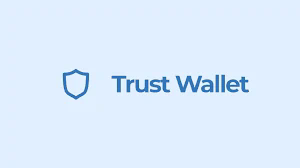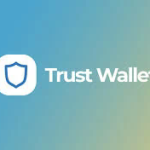Which Crypto Wallet is Most Secure? A Comprehensive Analysis
—
### Introduction
The world of cryptocurrency has surged in popularity over the last decade, leading to an increased demand for secure storage solutions to protect digital assets. With a plethora of options available, from hardware wallets to software applications, the question arises: which crypto wallet is the most secure? This article aims to explore the various types of crypto wallets, analyze their security features, and provide insights into best practices for safeguarding digital assets.
### Understanding Crypto Wallets
A crypto wallet is a digital tool that allows users to store, send, and receive cryptocurrencies. Unlike physical wallets that hold cash, crypto wallets do not store currency in a tangible form. Instead, they contain the keys needed to access and manage a user’s cryptocurrency holdings on the blockchain.

There are three primary types of crypto wallets:
1. **Hot Wallets**: These wallets are connected to the internet and include web-based wallets, mobile apps, and desktop software. While they offer convenience for frequent transactions, their constant online status makes them vulnerable to hacking.
2. **Cold Wallets**: These wallets are offline and include hardware wallets and paper wallets. Cold wallets provide enhanced security as they are not exposed to online threats, making them ideal for long-term holders who do not require immediate access to their assets.
3. **Custodial Wallets**: Generally provided by exchanges or third-party services, custodial wallets handle the storage and security of a user’s private keys. While they can offer more convenience in some cases, the user must trust the provider’s security measures.
### Security Features in Crypto Wallets
When assessing the security of a crypto wallet, several features must be considered:
1. **Private Key Control**: The cornerstone of crypto security is the private key, which must remain confidential. Wallets that give users complete control over their private keys are generally considered more secure.
2. **Two-Factor Authentication (2FA)**: This additional layer of security requires users to provide two forms of identification before accessing their wallets, making unauthorized access more difficult.
3. **Encryption**: Strong encryption mechanisms protect private keys and sensitive data within the wallet. This entails encrypting the wallet’s contents so that only authorized users can access it.
4. **Backup and Recovery Options**: The best wallets offer straightforward backup procedures and recovery options to secure assets in the event of device loss or failure.
5. **Multi-signature (Multisig) Support**: Some wallets offer multi-signature capability, allowing multiple signatures to authorize transactions. This feature enhances security by distributing access control.
6. **User Experience**: While not a direct security measure, a user-friendly interface can help prevent user errors that might compromise security.
### Deep Dive into the Most Secure Wallets
Now that we have a clearer understanding of wallet types and security features, let’s examine some of the most secure crypto wallets available on the market today.
#### 1. Hardware Wallets
**Trezor Model T**
Trezor Model T is one of the leading hardware wallets, offering a touchscreen interface and a robust security protocol. Users have full control over their private keys, which are stored in a secure chip. With 2FA, firmware verification, and regular updates, Trezor ensures that users’ assets are well-protected. Additionally, the wallet enables in-wallet trading and supports multiple cryptocurrencies.
**Ledger Nano X**
Ledger Nano X is another top-rated hardware wallet known for its Bluetooth capability, allowing for mobile usage while maintaining security. Ledger employs a secure element (SE) to store private keys, along with a robust cryptographic architecture. The Nano X supports a wide range of cryptocurrencies and can manage multiple apps simultaneously, making it versatile and secure for users.
#### 2. Cold Wallets
**Paper Wallets**
A paper wallet is a physical representation of a cryptocurrency address and associated private key. While they are inherently immune to hacking and online attacks, there are risks involved, such as physical damage, loss, or theft. For those who choose to use paper wallets, it’s essential to utilize secure methods for generating and storing them offline.
#### 3. Software Wallets
**Exodus Wallet**
Exodus is a popular software wallet that combines user experience with security insights. It allows users to manage a range of cryptocurrencies and is available on desktop and mobile platforms. Exodus offers 2FA and encryption but does suggest caution regarding the control of private keys, as the wallet is not fully open source.
**Atomic Wallet**
Atomic Wallet provides a non-custodial and decentralized approach, which allows users to maintain control of their private keys. It employs strong encryption and allows for backup phrases for recovery purposes. Atomic Wallet also integrates with decentralized exchanges (DEX), enhancing its usability and security.
### Comparing Security Approaches: Hardware vs. Software Wallets
Hardware wallets are often viewed as the gold standard for securing cryptocurrencies due to their offline nature and physical security features. They mitigate the risk of online hacks significantly, making them ideal for long-term holders.
Conversely, software wallets offer greater convenience for regular trading and accessing funds quickly. However, they are susceptible to phishing attacks, malware, and other online threats due to their connection to the internet.
When choosing between hardware and software wallets, users should consider the frequency of transactions, the total value of their holdings, and their technical proficiency.
### Best Practices for Wallet Security
Regardless of the wallet type, there are several best practices that users should follow to enhance their security:
1. **Keep Software Updated**: Regularly update wallet software to benefit from the latest security patches and features.
2. **Use Strong Passwords and 2FA**: A strong, unique password combined with 2FA can significantly reduce the risk of unauthorized access.
3. **Secure Backup**: Create multiple secure backups of the wallet’s recovery phrase, private keys, and wallet files, storing them in secure, offline locations.
4. **Be Aware of Phishing Attempts**: Always verify URLs, avoid clicking on suspicious links, and be cautious of unsolicited communication.
5. **Limit Exposure**: Only keep small amounts in hot wallets, while the bulk of your assets should be stored in cold wallets.
### Conclusion
Determining the most secure crypto wallet ultimately depends on individual needs, trading habits, and the amount of cryptocurrency held. Hardware wallets like Trezor and Ledger Nano X stand out for long-term storage, while software wallets like Exodus and Atomic offer convenience for active trading. Adhering to best practices in security, understanding the functional dynamics of each wallet type, and maintaining vigilance against threats are essential for safely managing digital assets in the evolving world of cryptocurrency. As technology progresses, users must remain informed and adaptable, ensuring that their crypto holdings are protected against both cyber threats and physical vulnerabilities.


